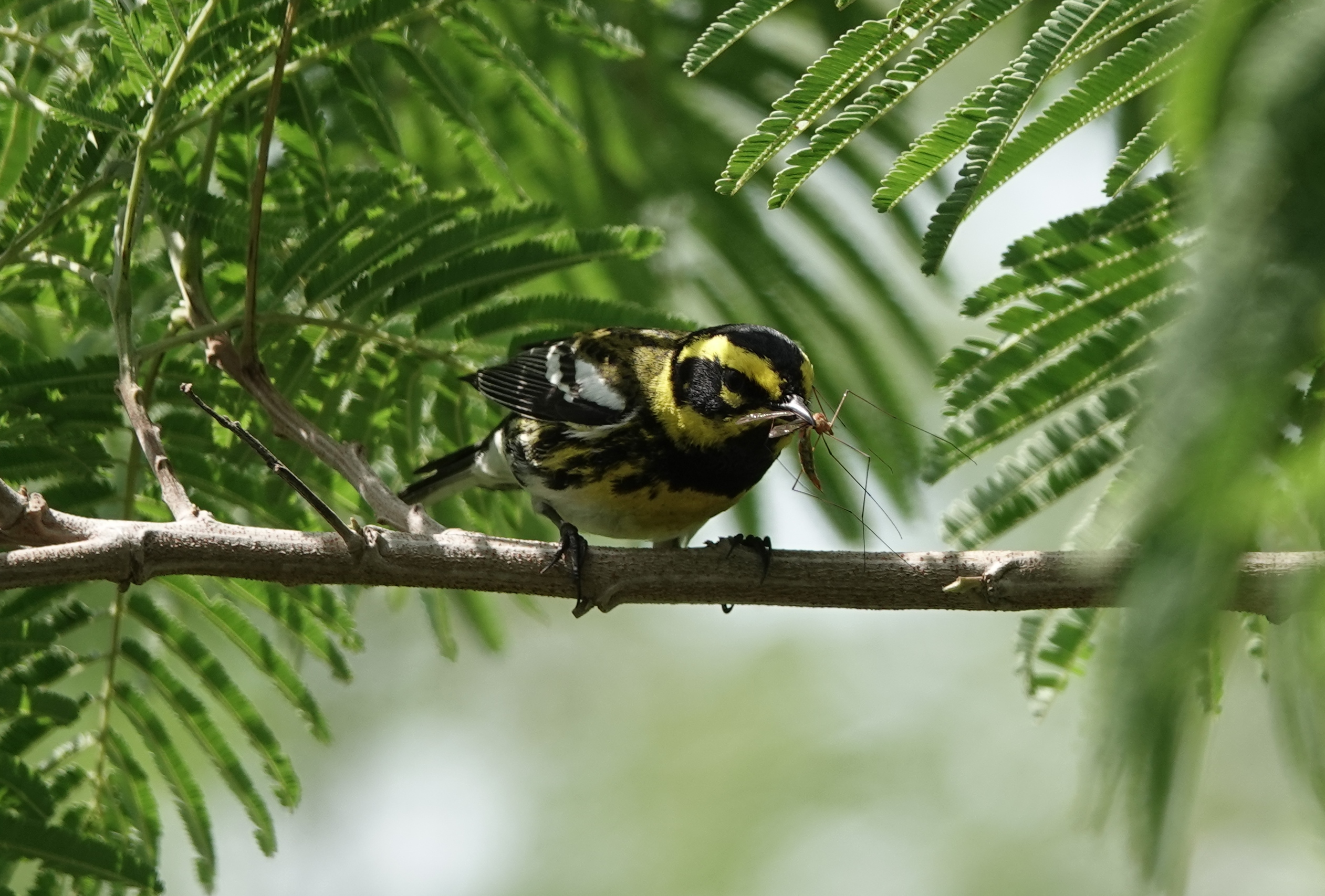South Texas Birding: Neotropical Migrants on South Padre Island
During the first week of April, Eric and I spent six amazing days birding in South Texas, starting in the McAllen area and ending on South Padre Island. Follow along with our journey here:
Part II: Coastal Prairie and Thornscrub
Part III: Gulf Coast Wading Birds
Part IV: South Padre Island Neotropical Migrants
Situated along the western edge of the Gulf of Mexico, 113-mile-long Padre Island holds the distinction of being the world's longest barrier island. South Padre Island, as the southern portion of the barrier island is known, is a renowned beach vacation destination, spring break hot spot, and (most importantly) the location of extraordinarily good birding, particularly during spring migration.
From late March through mid-May, birds migrating north from their wintering grounds in Central and South America to their breeding habitat in North America follow invisible yet ancient migratory pathways along the Central Flyway. For birds making the 600+ mile non-stop flight across the Gulf of Mexico from the Yucatan Peninsula, the first land at which these tired migrants arrive is South Padre Island. And for many weary avian travelers, this narrow spit of land and the lush, insect-rich habitat thereon, is a literal lifesaver.
 |
| Male Baltimore Oriole, enjoying an orange at the Valley Land Fund lots on South Padre Island |
When the wind is from the south, migrating birds are pushed northward across the Gulf by a helpful tailwind. In these conditions of favorable winds, some tired birds still stop for refuge and refueling on the barrier island, but many northbound migrants continue up onto the mainland and find themselves in the heart of Texas or beyond before they land for a break.
But when the wind shifts and blows from the north, these same neotropical migrants must struggle against a dangerous headwind in their strenuous effort to cross over six hundred miles of open ocean, without the ability to swim or even float on the water. Dry terra firma is the only thing that can save them, so when the north winds blow during the migration season, the first land that nearly-spent birds come to - in this case, the long barrier island known as South Padre Island - is absolutely critical. When the wind is from the north during the peak of April migration, birds descend here in unbelievable numbers.
This phenomenon, known in the ornithological world as "fallout," is less a spectacle of masses of birds swirling in the air (as pictured in the still-excellent movie, "The Big Year") and more one of small, brilliant scraps of color littering the ground and smattered throughout trees: tired and hungry songbirds foraging frantically for the calories they need to go on. As the birds are exhausted and focused on finding food, birders are often able to get good eye-level, close-up views of some of North America's most beautifully colored birds, including buntings, orioles, tanagers, grosbeaks and warblers... many of which elect to remain high up in the leafy tree-tops once they reach their breeding grounds. This video from YouTube gives viewers a nice sampling of what might be expected on a good day of spring migration birding on South Padre Island.
 |
| Male Painted Bunting, foraging for insects in the gardens at the South Padre Island Birding and Nature Center |
Our birding experience on South Padre Island was wonderful, though not quite the mind-blowing spectacle I know it can be. This was for a couple of reasons, the first of which was our timing. We visited during the first week of April, which is really just the beginning of migration season; numbers of migrating birds don't peak until the last couple of weeks in April. We were seeing the first birds that were beginning to make their way north; a week or two later, migration would have been in full swing. (But, the first week of April was Eric's spring break, so we have to travel when we can!)
 |
| Eastern Kingbird... just passing through |
The second reason was determined by the weather. A couple of days before we arrived, the winds were from the north, and the lists of migrants landing on the island looked promising! But then the winds shifted, and each day, as the winds blew steadily from the south, ferrying songbirds north with a helpful tailwind, the list of migratory birds found on the island grew shorter and shorter. With the wind at their backs, birds flying north were able to continue farther inland before stopping to rest and refuel, bypassing South Padre Island entirely... which is good for the birds, but less-good for birders.
 |
| Townsend's Warbler (slightly off-course here in Texas), refueling for his migratory journey to the northwest. |
 |
| The irony is... the best warbler photos I got were of a rare-for-Texas Townsend's Warbler, which is a familiar face for Californian birders! |
 |
| Black-and-White Warbler, gleaning insects from the tree bark, nuthatch-like. Some of these little guys actually spend the winter in South Texas, as well as farther south in Central and South America. |
 |
| Not a great photo, but Swainson's Warblers are renowned for their skulking behavior, so the fact that I not only spotted this little guy in the first place, but also managed to get any kind of identifiable photo at all is amazing! |








Comments
Post a Comment